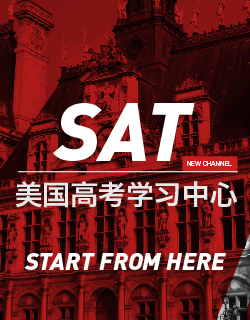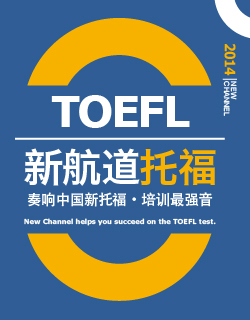托福TPO46听力题目+答案+MP3音频下载
Conversation 1
1. Why does the student go to see the woman?
A To ask about events that the music house sponsors
B To find out which of the common interest houses have rooms available
C To find out if it would be possible for him to live in the music house
D To check on the status of his application to move into the music house
2. According to the woman, why might some people not want to live in the music house?
A is rarely quiet.
B is not conveniently located.
C All of the residents are required to participate in house activities.
D All of the residents must be enrolled in a music class.
3. What does the woman imply when she mentions the jazz festival?
A It was free for residents of the music house.
B It was held at the music house.
C Music house residents were encouraged to perform at it.
D Music house residents were involved in organizing it.
4. Why does the woman mention the acceptance rate of applicants for the music house?
A To the student that his application might not be approved
B To suggest that the music house is not a popular place to live
C To convince the student that his chances are better if he applies in person
D To emphasize the importance of turning in the application form early
5.What information does the student need to include in his application?(Click on 2 answers)
A Some ways he might contribute to the music house community
B Information about his experience as a musician
C Reasons why he wants to live in the music house
D A recommendation from a current resident of the music house
Conversation 2
1. What is the conversation mainly about?
A Using new technologies to preserve old newspapers
B Using old newspapers to conduct historical research
C The rise of American journalism in the eighteenth century
D Press coverage of the French Revolution of 1789
2. What gave the student inspiration for the topic of her term paper?(Click on 2 answers.)
A A recent visit to the library’s microfilm collection
B A long-standing interest in the history of France
C Seeing what an eighteenth-century newspaper looked like
D Reading a translation of French historical accounts
3. According to the professor, what should the student ask the librarians?
A Which eighteenth-century newspapers covered events in France
B If she can request microfilmed newspapers from another library
C If the old newspapers she wants to read are available online yet
D Whether the library has any original copies of eighteenth-century newspapers
4. What will the student probably include in her term paper?
A Newspaper coverage of the French National Constituent Assembly
B Newspaper coverage of the storming of the Bastille prison
C Ways in which the French Revolution contributed to the development of democratic ideals
D How the reporting of American journalists differed from that of French journalists
5.What can be inferred about the professor when he discusses a paper presented at a history conference?
A He is grateful that he saved the paper because it might help the student.
B He worries that the student will overgeneralize American attitudes based on the content of newspapers
C He is excited to provide a model that the student can use to organize her term paper.
D He hopes that the student will consider interviewing the author of the paper.
Lecture 1
1. What is the lecture mainly about?
A Various methods that ants use to locate food
B A collective behavior common to humans and animals
C A type of animal behavior and its application by humans
D Strategies that flocks of birds use to stay in formation
2. According to the professor, what behavior plays an important role in the way ants obtain food?
A Ants usually take a different path when they return to their nest.
B Ants leave chemical trails when they are outside the nest.
C Small groups of ants search in different locations.
D Ants leave pieces of food along the path as markers.
3. What are two principles of swarm intelligence based on the ant example?
(Click on 2 answers.)
A Individuals are aware of the group goal.
B Individuals act on information in their local environment.
C Individuals follow a leader’s guidance.
D Individuals instinctively follow a set of rules.
4. According to the professor, what path is followed by both telephone calls on a network and ants seeking food?
A The path with the least amount of activity
B The most crowded path
C The path that is most reinforced
D The path that has intermediate stopping points
5. Why does the professor mention movies?
A To identify movie scenes with computer-simulated flocks of birds
B To identify a good source of information about swarm intelligence
C To emphasize how difficult it still is to simulate bird flight
D To explain that some special effects in movies are based on swarm intelligence
6. What is the professor’s attitude about attempts to create computer-generated crowds of people?
A She believes that the rules of birds’ flocking behavior do not apply to group behavior in humans.
B She thinks that crowd scenes could be improved by using the behavior of ant colonies as a model.
C She is surprised by how realistic the computer-generated crowds are.
D She is impressed that computer graphics can create such a wide range of emotions.
Lecture 2
1. What is the lecture mainly about?
A Techniques for creating lifelike portraits
B Theories about a preference in portrait painting
C Reasons for a decline in the popularity of portrait painting
D Ways researchers determine whether a painting is authentic
2. According to the professor, what change occurred in portrait paintings over time?
A Portrait artists became more skilled at painting profiles.
B Portrait artists began painting a greater variety of subjects.
C The percentage of left profiles decreased.
D A left profile became a symbol of the subject’s social status.
3. What point does the professor emphasize by his discussion of the lithograph The Potato Eaters?
A Profiles are more difficult to create than head-on portraits.
B Some artists consider the direction of the profile a key element in a portrait.
C Most group portraits include both left and right profiles.
D The direction of a profile is usually determined by the characteristics of the subject.
4. According to the professor, what is the problem with the "right-handed" hypothesis?
A Left-handed artists are equally comfortable painting left and right profiles.
B Right hands tend to cover up facial features when painting left profiles.
C Statistics show that right-handed artists tend to paint right profiles.
D Left hands are less likely to cast shadows when painting right profiles.
5. What does the professor imply about the "studio organization" hypothesis?
A It has been disproved by recent studies.
B It accounts for an important change in portrait painting.
C It is based on a study of a relatively small number of portraits.
D It was first proposed by the owner of a modern-day portrait studio.
6. Why does the student say this:
A To explain why he prefers to paint left profiles
B To point out a difference between adult portraits and baby portraits
C To point out a fact that contradicts the "parental imprinting" hypothesis
D To provide support for the "parental imprinting” hypothesis
Lecture 3
1.What is the lecture mainly about?
A The economic factors that made lapis lazuli expensive
B The types of paintings in which the color blue is popular
C Early processes for making blue pigments from stones
D Difficulties using the color blue in early paintings
2. What was Gainsborough's goal when he painted The Blue Boy?
A To find an acceptable alternative to ultramarine pigment
B To demonstrate that blue should be used only in certain paintings
C To contradict a common belief about the use of blue in a painting
D To protest the high costs of painting with most blue pigments
3. What does the professor imply about smalt as a substitute for lapis lazuli?
A It eventually became as expensive as lapis lazuli.
B It was used frequently throughout the nineteenth century.
C It was not of an acceptable quality for many artists.
D It was seen as a better substitute for lapis lazuli than azurite was.
4. What two points does the professor make about the process of turning lapis lazuli into ultramarine?(Click on 2 answers.)
A It took a lot of time.
B It required expensive tools.
C It did not produce much pigment.
D It was perfected by the French.
5. Why does the professor mention the French government?
A To indicate who sponsored the digging of additional lapis lazuli mines
B To emphasize the importance of developing an affordable blue pigment
C To point out that artists were not permitted to use certain stones to make pigments
D To question the government’s use of public funds to support the arts
6. What does the professor imply when he says this:
A He is not convinced the Egyptians made the first synthetic pigment
B He is impressed by the Egyptians’ accomplishment.
C The process the Egyptians used is now widely known.
D The Egyptian pigment was of lower quality than today's pigments.
Lecture 4
1. What does the professor mainly discuss?(Click on 2 answers.)
A Reasons for fluctuations in the price of copper
B Some important attributes of sopper
C The production of coins from copper and zinc
D The possible future of the United States penny
2. What arguments in favor of keeping the penny in circulation does the professor emphasize?(Click on 2 answers.)
A Some people are emotionally attached to pennies.
B Pennies cost very little to produce.
C The price of consumer goods could rise.
D The copper industry’s profits depend on the production of pennies.
3. What does the professor say about the negative seigniorage of the nickel?
A The United States government is looking for ways to reduce it.
B It is significantly greater than that of the penny.
C It is less of a problem than some people believe it to be.
D Merchants benefit from it more than consumers do.
4. Why does the professor mention the trumpet and trombone?
A To compare the sound-generating properties of copper with those of zinc
B To exemplify the benefits of mixing copper with other metals
C To point out that copper can be shaped into a variety of forms
D To point out that objects containing copper can shine like gold
5. What does the professor imply about the green patina that sometimes appears on copper?
A It is difficult to remove by conventional means.
B It adds to the beauty of objects made of copper.
C It serves a useful function.
D It reduces the conductivity of copper.
6. Why does the professor say this:
A He wants the woman to realize her own mistake.
B He wants the woman to support her point with precise numbers.
C He realizes he neglected to mention an important detail.
D He shares the woman’s concern about the copper industry
托福TPO46听力答案
CONVERSATION1:1-4.CADA 5.AC
CONVERSATION2:1.B 2.DE 3-5.CAB
LECTURE1:1-2.CB 3.BD 5-6.DA
LECTURE2:1-6.BCBABD
LECTURE3:1-3.DCC 4.AC 5-6.BB
LECTURE4:1.BE 2.AC 3-6.BBCA
上海新航道整理!由于音频文件不便上传,想要托福TPO46听力题目+答案+MP3音频下载的同学,请提交“姓名+电话+邮箱”,我们将于15个小时内发送给您!
更多托福TPO大全 查看,请点击:http://www.shxhd.cn/tpo/







